Fancy a spin on Josh Waters’ ASBK title-winning Gixxer? Yes please, said Steve Martin
Questions, questions… I had posed plenty of them at the international launch of the new Suzuki GSX-R1000R at Phillip Island in February, just weeks before it was due to compete in the 2017 Australian Superbike Championship.
Could the latest version of this iconic model regain the crown its predecessor once held? Could a completely new model be a winner straight out of the box? Would it even be good enough to take it to the rest? What chance did a newly formed team have of success in such a tough competition, even with factory backing?
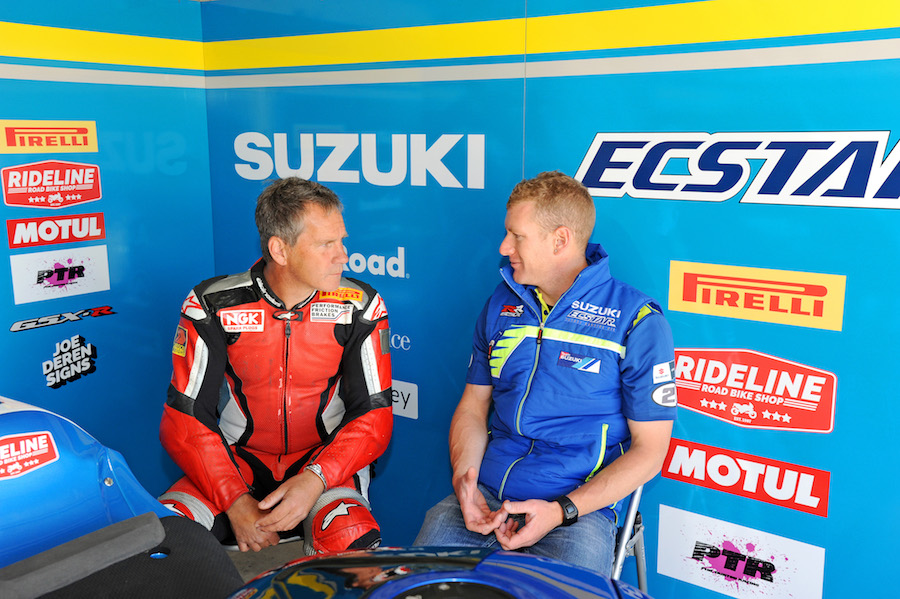
Eight months later we had all the answers. Not only was the new Gixxer a winner, but so was the Canberra Motorcycle Centre Team Suzuki Ecstar outfit that had been formed little more than a month before the start of the season. This new team had an amazing debut season as 30-year-old Waters – returning to Australia after three years racing in the UK – rode to an unexpected third ASBK title.
The deal with Suzuki Australia and the Canberra Motorcycle Centre had come about very quickly.

CMC managing director Dale Brede, a 42-year-old former car racer who finished seventh at Bathurst in 2005, moved into the bike world in 2015 when he bought the dealership. With a passion for racing, he decided to approach Suzuki and explore the possibilities. As luck would have it, Suzuki had already decided to race the new superbike and wanted to involve both Waters and legendary Suzuki tuner Phil Tainton, who had helped Waters to his previous Superbike titles in 2009 and 2012. Just two weeks before the launch of the new model, Brede found himself with his own little super team for the 2017 season.
The first few rounds of the championship went as might have have been expected. There were a few teething problems, but there were promising signs in those early rounds too, as Waters and the Ecstar team showed glimpses of speed with a bike that many others had shunned for 2017 because it was so new. The consistency wasn’t there, but that was hardly surprising given that they were still finding their feet.
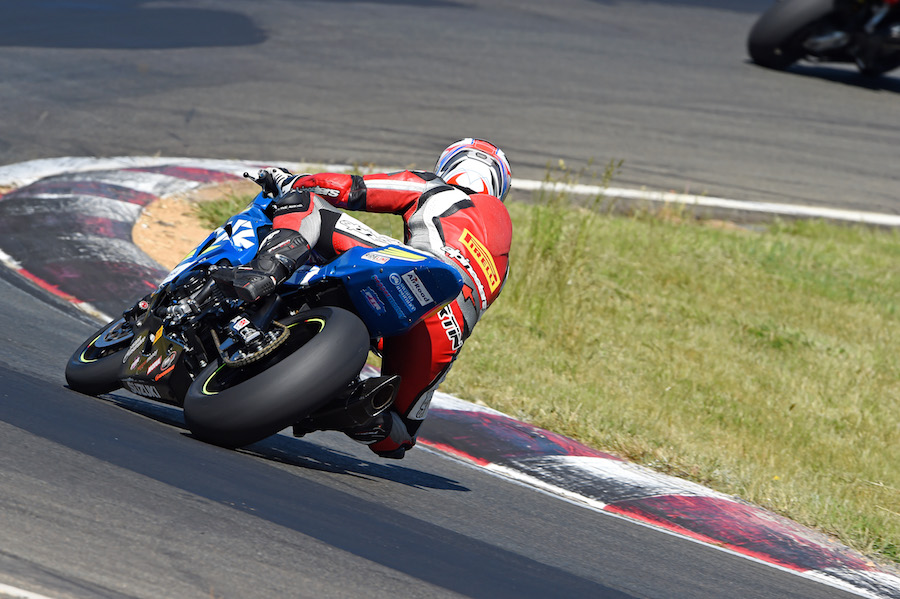
After regrouping during the winter break, the team headed to Darwin for the fourth of seven rounds better prepared. And it wasn’t just the weather that was hot in the Territory that weekend because Waters did something rather special, decimating the field with a display of total domination in winning the two races. So much for his pre-season hopes of simply scoring a podium before the end of the year.
“Darwin really changed things for me,” Josh says. “I had a really good feel with the bike.”
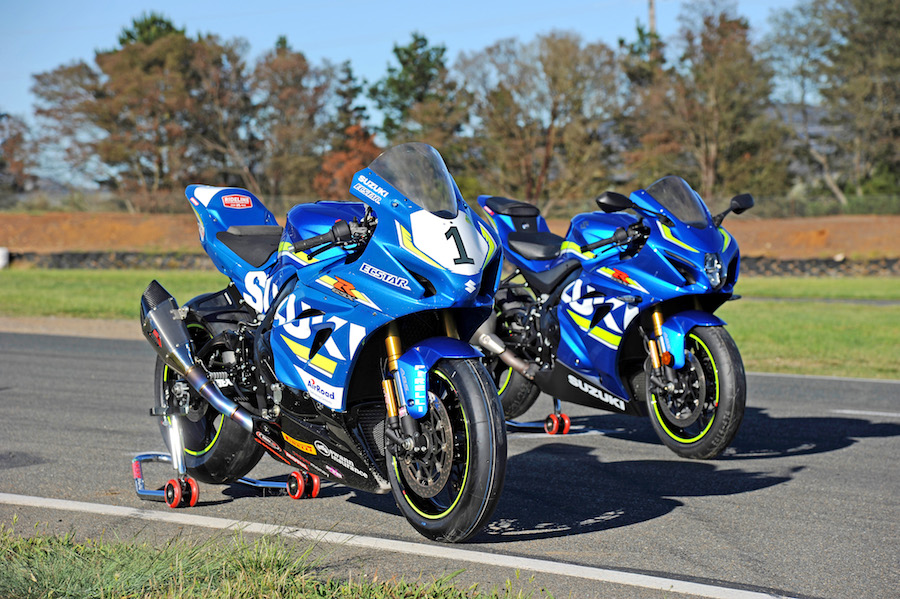
Another double victory in the penultimate round at Sydney Motorsport Park suddenly saw the L-platers of the series in with a real shot of winning the championship at their first attempt.
The last round at the Island was intense, and once again the Ecstar Suzuki team had to come from behind to seal the deal. Josh pulled the trigger on his GSX-R and hit the bullseye, walking away with Suzuki’s first ASBK title since Wayne Maxwell claimed it four years earlier.
The 12-strong Japanese development team that had helped deliver this title for Suzuki went out to dinner that night all wearing their ‘Josh Waters #1’ T-shirts, and I’m sure plenty of Saki was drunk. And there must have been high-fives back in Hamamatsu, especially as Toni Elias had already taken out the Moto America superbike title, proving the racetrack prowess of the new GSX-R.
Everyone was happy at Suzuki Australia too, and when team manager Geoff Wood suggested I have a crack on the championship-winning machine, he didn’t need to twist my arm. We decided that the Canberra dealership’s annual motorcycle ride day held at Wakefield Park in November would be the perfect time and place; if you’re riding Josh’s bike, you may as well ride it while he’s at the track. Gulp!
I have to admit I was very nervous before jumping on board the now three-time champion’s bike because the Wakefield Park circuit had just had some new bitumen splashed around and the grip level was like being on oil. I didn’t want to be the one to throw it away. After all, a bike that’s just won a championship should be pushed into the rider’s loungeroom in one piece – without gravel rash from some racing has-been – so he can tell his grandchildren all about it.
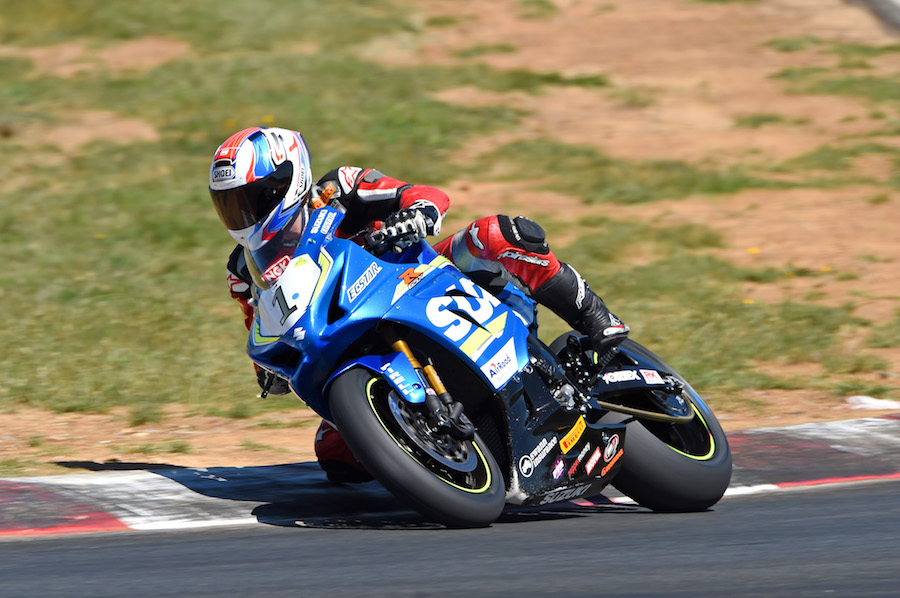
My plan for Wakefield Park was to head out on a standard GSX-R1000R first, work my way up to speed, then jump onto Josh’s title-winning machine having had at least some preparation. Although I got to do plenty of laps on the standard roadbike it didn’t calm my nerves in the slightest. Wakefield is tight and twisty, with a ton of bumps added in for good measure, so not really the place to ride an angry championship-winning bike.
The attention to detail on the Ecstar machine is stunning. It was easy to see that it wasn’t built in someone’s backyard by a bunch of weekend warriors, but in a proper race shop by professionals. Phil Tainton to be precise, and if there’s one man you would like on your side come race day it’s him.
These guys were entrusting me with a very special piece of kit and I needed to look after it.
The first striking observation was how clean and minimalistic the lines are. There is nothing out of place and, although modifications are allowed from standard, every change has been done for a reason; if it makes no sense they just use the high-quality standard items.

The standard switchblocks are retained, as are the handlebars, although they are set slightly wider than the standard bike’s, giving more purchase and control over the front end. The dash is also standard, with a timer fitted in front to provide a good view of the rider’s most important objective – his lap times.
In place of the standard nylon-covered foam seat is a solid one-piece unit with a hard rubber pad that lets you feel every ripple on the track. Although a seat might not sound like much of a change, it really helped turn the GSX-R into a racebike.
Sitting on the bike for the first time, it was interesting just how unaggressive it feels. It’s as spacious as the road version, which almost makes it comfortable. The overall ride height felt taller, but that’s more about the geometry, probably adjusted to help load its wheels on acceleration and braking, and to be lighter in the change of direction. Remember though, that none of the geometry changes are outside of the bounds you could do to your own bike at home.
Starting the 1000R is just like firing up the roadbike – turn the key and hit the starter, and you’re away. But the roar from the full Yoshi pipe tells you this is no standard Suzuki. It sounds impressive and all businesslike but remains vibration-free.
Heading out for the first time on the racebike left me gobsmacked on so many levels.
The most obvious improvement over the production machine is just how well the reflashed ECU works. The standard Suzuki has an extremely good electronic set-up, but the team obviously spent many hours making the racebike perfect.
I’m very fussy when it comes to the way a bike picks up the throttle, and at all openings in all gears this bike will be hard to improve next year, not only in the acceleration but also the deceleration mapping. The throttle didn’t automatically open excessively so there was no pushing into the corners, just a flawless system working at its maximum.
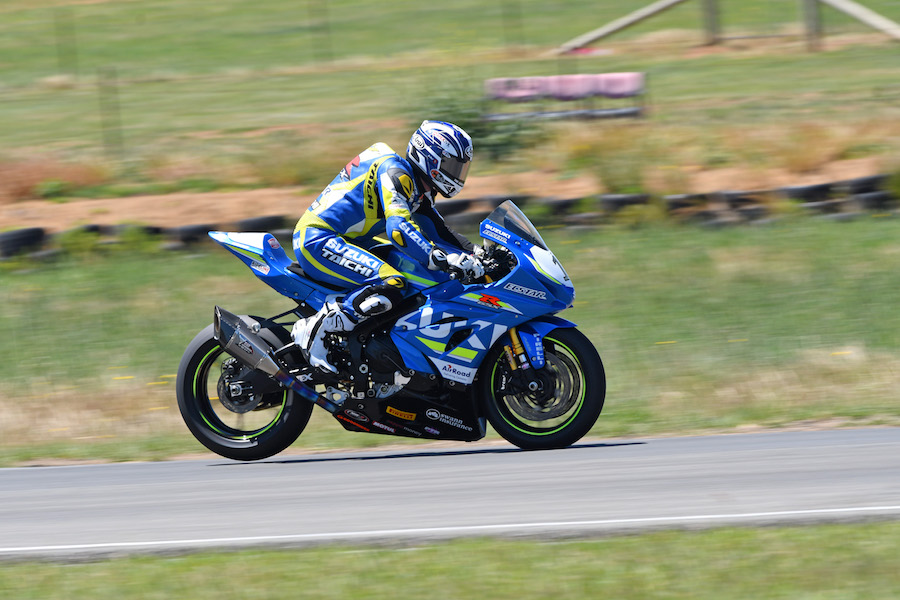
Coming out of the final turn at Wakefield was so much easier than on the standard bike, mainly due to the feel the electronic settings provide. Under acceleration there was an instant connection with the torque of the bike, which made it easy for me to feel the rear wheel grip, and as I twisted harder the bike just picked up and took off like a rocket.
The wheelie control is also racier than on the standard setting. Instead of coming up and popping down quickly, slowing forward motion, the race system hovers a bit more, allowing the bike to shoot forward without slowing. Combined with a longer than standard wheelbase, that made for a very predictable ride, even over bumpy surfaces.
The auto-blipper downshift isn’t yet fitted to the racebike (and probably won’t be until the team gets its full kit ECU next year) because there wasn’t enough time to perfect the setting to work on the absolute limit of adhesion.
With the team being put together in such a rush, and the need to play it safe, they also opted to fit proven Öhlins cartridges up front inside the Showa BFF fork, which is new on the market.
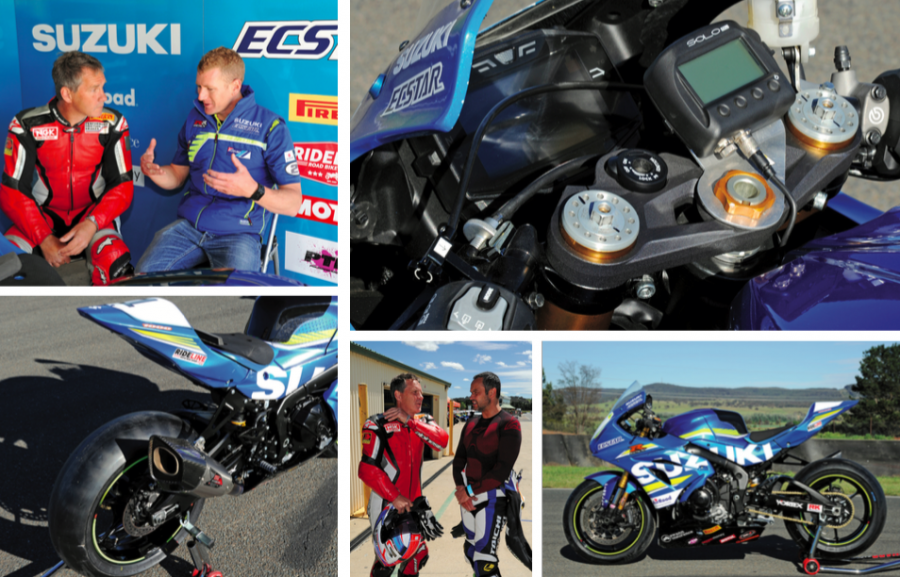
I have to praise the Suzuki’s braking ability. It didn’t matter how hard I pulled the front brake lever, the bike tracked true and stable while maintaining complete control. It was also possible to go from hard braking to the tip-in phase of corner entry without a massive change in geometry, meaning smooth tip-ins are pretty much guaranteed every corner.
The rear end is also covered by an Öhlins TTX mounted to the standard link, and it provides the great support you would expect from such high-quality gear. There was no feeling of squat and I never felt I was running wide.
I’ve rarely ridden near-perfect superbikes – perhaps some factory Ducatis and BMWs – and many strong contenders fall down on the crucial points of turning and edge grip. Perhaps this would be the Suzuki’s weakness? But no, even on the slippery Wakefield surface it turned on a dime and after 15 laps the rear Pirelli SC1 tyre still felt like new.
On my in lap I was thinking just how good this bike had been on the track. Frankly, I was dumbfounded because it’s pretty much standard apart from a few bolt-ons and careful setting up. Clearly it’s made of very good stock.
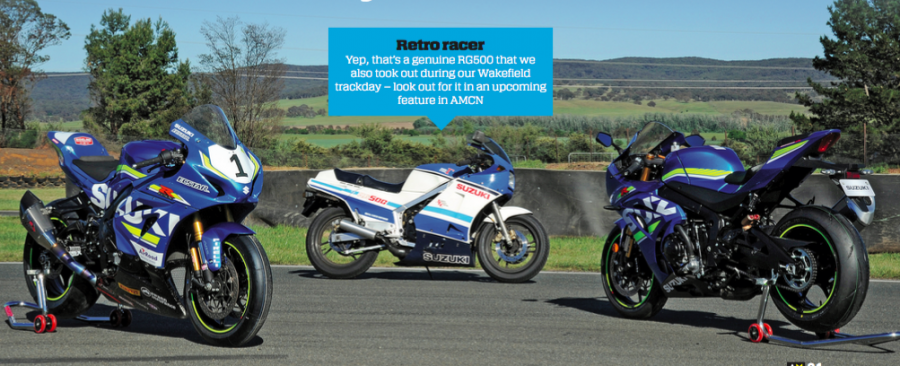
Overall, this is the best all-round superbike I’ve ridden in a long time. It ticks all the boxes: speed, agility and the much-needed stability to back up the package.
But it’s the ability to work well straight out of the box that has perhaps proven to be its strongest asset. The fact that I rode with the Phillip Island settings at a completely contrasting venue, and it worked, is a testament to the bike and the team behind it. There’s always room for improvement, but that will just be the cream because this bike is already on the money.
TEST STEVE MARTIN PHOTOGRAPHY KEITH MUIR

As published in AMCN Yearbook (Vol 67 No 12)